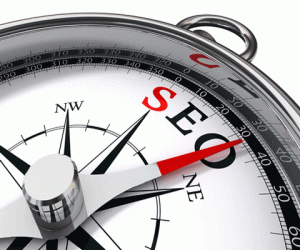
by Francois Muscat | Nov 28, 2016 | SEO
Everyone wants to be on the first page of a Google search. It’s probably one of the most common requests that digital marketers receive. While taking the top position on a search engine (or as close to the top as possible) is by no means easy, the beauty of search engine optimisation is that it can be targeted by country, province and city. This increases the likelihood of a high Google ranking, as many internet users refine their search according to location. Building a successful national SEO strategy is hard work, however the basic principles are quite simple:
Keyword research is essential
Identify keywords specific to your brand that are more likely to result in a conversion (a purchase online, contacting your company via online tools etc). Keyword popularity is not necessarily an indicator of how well they will work for you, so thorough research is required.
Optimise your website
An important part of the website design process is what happens behind the scenes – the optimisation of the website based on your chosen search terms. Items that should be optimised include the title tag, meta description, images, and header tags. Your actual site content should be written with SEO on mind, but should still be interesting and relevant for visitors to your site.
Keep directory listings up to date
Getting your site listed on the top directory listings in South Africa is a great way to reinforce your digital marketing strategy. It’s best to focus on a few well known listing sites as quality is far better than quantity, and listings on lesser known sites don’t actually do much for search engine optimisation. Make sure that your contact and address information is consistent across your website, directory listings as well as location accounts such as Google + Business.
Engage in relevant link building
A link building strategy is essential for SEO that continues to provide results. While it is possible to purchase ‘link packages’ that flood links to your site throughout the web, a natural link building process that builds high quality, relevant links is the kind of thing that search engines like to see, and will reward with higher rankings. Ensure that your content (on your website and across social media) is engaging and encourages sharing to fuel organic link building.
For information on digital marketing, including search engine optimisation, contact us today.

by Francois Muscat | Nov 16, 2016 | SEO
Online marketing’s buzz phrase is – without a doubt – SEO. The competition has become fiercer since Google cut the Top 7 to just three listings and businesses are vying with advertisements in the local space too. Let’s take a look at local Search Engine Optimisation and see what we should and should not be doing to get into Google’s highly prized Top 3.
On-site Optimisation and Links
Regularly review and correct your on page SEO elements. Contact details such as your business’s address are crucial to local listings so make sure yours is accurate. Don’t avoid doing a regular audit of all your information; results of a search can change daily. Observe the keywords your competitors are using and use better ones.
Key Elements
Local SEO really comes down to two factors: services offered and location, so your site should be very clear on those two important (and seemingly obvious) points. In simpler terms: you must clearly indicate the services you provide and the locations in which you provide them.
Here is a useful list of key on-page local SEO elements:
- Title tags
- Meta descriptions
- Header tags
- Page content
- Images
- Map
- Name, address and phone (NAP) on every page
Google will triangulate the address info on your site with info on Google My Business, and then cross check it with the info on your enterprise from around the web. The key elements to consider are:
- NAP consistency. Your contact details are your location fingerprint. You need this to be consistent around the web; although it may seem obvious, but it is vital that your telephone number – for example – is always written in the same format and not 011-555-1111 sometimes and (011) 555 1111 at others.
- Citations. These listings in business directories like the yellow pages and mentions on social media platforms. Keep your information consistent so Google can trust it.
Look out for more on this fascinating topic soon!
For assistance on local SEO strategies and more, get in touch with leading global Internet marketing franchise.

by Marianna Muscat | Nov 8, 2016 | SEO
As we evolve more and more into a digital age, most marketers have included digital marketing as an essential element to their strategies. It is critical to keep up – or even ahead of – the times to safeguard that you aren’t lagging behind your competitors or getting stuck in a marketing rut.
No area of inbound marketing gets hackles up more than SEO does. Critics of search engine optimization (SEO) go as far as saying that if it is not dead now, it will be soon.
We are inclined to disagree
Just because Google releases new updates about algorithms and changes in the search results every year, does not mean that you need to be defeatist. Reign in the drama, and repeat after us: “Not having SEO as part of my digital marketing strategy will be detrimental to my online success.”
The reason for the changes from Google and other search engines is to avoid inauthentic websites from getting higher rankings than they deserve. This is good news for the rest of us. Hurray for the end of keyword stuffing plus thousands of backlinks instead of a relevant and informative message. The current chattering that search engines are shifting away from old methods of SEO and focusing instead on better quality content needn’t be quite so black and white.
How about joining forces?
Placing the emphasis on the quality of content marketing, rather than just the little tricks of traditional SEO gives you a chance to double your rewards. To get the most out of your digital marketing you need to pair high-quality content with the correct SEO strategies – one shouldn’t be done without the other.
Statistics reveal that a website ranking at positions 1-3 can get up to 33% of all users’ engagement for a particular search. A little extra optimizing can push you up to the top.
For assistance on solid SEO practices and more, get in touch with leading global Internet marketing franchise.

by Francois Muscat | Oct 24, 2016 | SEO
First impressions count, making your website landing page the most important aspect of your website design. While great search engine optimisation will bring visitors to your site, your landing page is what makes or breaks your website’s conversion rate. It’s the difference between turning visitors into customers, or making them turn away. A great landing page is actually quite simple to achieve. Here are the basics:
Have a specific goal
What do you want visitors to your site to do once they reach your landing page? Your website’s conversion refers to the rate at which people engage with the landing page to achieve your goal. Whether that goal is to shop at your online store, sign up for a newsletter or visit a specific page you need to have clear expectations and design the landing page with these in mind.
A strong call to action
Encouraging visitors to achieve your goal is really all about a well placed, clear call to action. This should be obvious, and is usually in the form of a button that directs people to a specific area of your website (e.g. “Visit our online store” or “Click here to view our portfolio” are both great call to actions for a landing page.)
Keep it simple and above the fold
Your landing page should be easy to navigate. Your call to action can also be a signup form – but be sure to make this as streamlined as possible, as there is nothing more annoying to visitors than a complicated form. All key information should also be above the fold – that is, should be visible in the browser window without the user having to scroll down.
Optimise every element
An excellent landing page with a high conversion rate combines the best content marketing with search engine optimisation to attract the interest of both search engines and people. Make use of engaging, keyword rich titles, headings and meta descriptions for the best results.
If you need any help with your digital marketing, including search engine optimisation and link building, contact us today.

by Francois Muscat | Sep 19, 2016 | SEO
Is search engine optimization (SEO) a focus area for your digital marketing campaign? Then these are the four areas that you should focus on before you get started:
Analysing your competition
Your first step in the right direction is to look at what your competitors are doing. Ask a digital marketing company to do a thorough competitive analysis so that you know which keywords your competitors are targeting, how they are ranking in the search engine results for these keywords and where the gaps are. This will give you a good idea of where your competitors’ strengths and weaknesses are and how you can use this to your own advantage.
Assess the current problems on your own site
There’s no point embarking on a new SEO campaign if you have existing issues on your website. Make sure that you don’t have duplicated content, that all of the basics (such as meta titles, alt tags, internal linking etc.) are correct and that your website displays correctly on mobile devices such as tablets and smart phones. These types of issues can be very damaging to your strategy, so sort out any existing challenges before you embark on a new campaign.
Plan your content strategy
Content marketing is a huge part of any successful SEO strategy. Determine what types of existing content already exists so that you can decide how it can be repurposed. PowerPoint presentations, case studies and white papers, for example, can be repurposed into videos, email campaigns and blogs. Collect all of the high quality content that you already have before you start commissioning new content to be generated from scratch.
Manage your backlink risks
It’s possible that you already have low quality or unnatural links leading to your website. Google algorithms could be penalizing your for this, so get the digital marketing pros to assess your link quality.
Need help with your search engine optimization campaign? Then contact WSI OMS today.

by Francois Muscat | Aug 22, 2016 | SEO
There are many misguided beliefs about local SEO. Here we have busted some of the top myths:
- A Google listing is all that you need
As with all types of digital marketing efforts, there’s not a single thing you can do to magically boost your rankings. Local SEO algorithms are complex and while claiming your Google listing is a step in the right direction, it’s definitely not all that is needed. If you have just kick-started your local SEO efforts, then be sure to claim your Google Business Listing as this will ensure that your company’s page shows up in Google maps.
- You need citations instead of links
We’ve seen a few digital marketers claim that link building is old news and citations are in. The truth is that both are still needed, but you need to focus on quality links as well as citations instead of going out and trying to get as many links and citations as possible.
- Social signals aren’t important
It’s still not easy to determine the exact impact that social media can have on your local SEO results, but social signals definitely matter. When you post content to social media platforms like LinkedIn and Twitter, you will be able to generate traffic from the backlinks that are created. These signals are all important queues for search engines to determine your authority.
- A once-off local SEO effort is enough
No it isn’t. Local SEO is an ongoing task and many digital marketers forget the important maintenance that sites need in order to avoid link degradation, updating website pages to be in line with evolving search engine algorithms and staying on top of what your competition is doing.
- Ranking in the top spot for one magical keyword is the goal
Many times, a client will have a single umbrella term that they want to rank #1 for. This isn’t a good way to go about local SEO. Make sure you are targeting a variety of keywords and phrases that not only make sense for search engines and web crawlers, but also your customers.
For more information and advice from WSI OMS, please contact us today.






